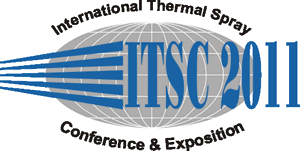
|
2607 |
|
Thursday, September 29, 2011, Saal A 11:20 AM Young Professionals |
|
Failure mechanism of non-stoichiometric abradable Mg-Al-Spinel coatings under thermal cyclic loading |
|
Svenja Ebert* / Forschungszentrum Juelich GmbH / IEK-1, Germany Tanja Steinke / Forschungszentrum Juelich GmbH / IEK-1, Germany Robert Vaßen/ Forschungszentrum Juelich GmbH / IEK-1, Germany Detlev Stöver/ Forschungszentrum Juelich GmbH / IEK-1, Germany Yannick Cadoret/ Rolls-Royce Deutschland Ltd & Co KG, Germany Matthew Hancock/ Rolls-Royce plc, United Kingdom |
|
Plasma-sprayed ceramic coatings are used as thermal barrier or abradable coatings in high-pressure stages of gas turbines. They are exposed to high thermo-mechanical loading due to harsh operating conditions. Today a material typically used in engines is yttria-stabilized zirconia (YSZ). This material has a low conductivity and a high thermal expansion coefficient, but limited temperature capability of about 1200°C in long-term applications. For the use as abradable coatings, thicker coatings over one millimetre are necessary. But the thicker the coating is, the more difficult it is to cool which has the risk of premature failure. As a result new ceramic materials have been developed. For the lifetime analysis they were tested by thermal gradient cycling tests. In the present work an APS ceramic double-layer topcoat composed of 7YSZ and non-stoichiometric Mg-Al-Spinel was used. The layer was sprayed on disc-shaped IN 738 superalloy substrates which were coated with a VPS Bondcoat. Under specific thermal cycling these samples show a typical failure mechanism with exfoliation of thin coating lamellae starting from the coating surface. This failure mechanism was analysed in detail, e.g. by scanning electron microscopy (SEM), X-ray diffraction, and chemical analysis. From these findings a model was developed to describe the degradation mechanism. |